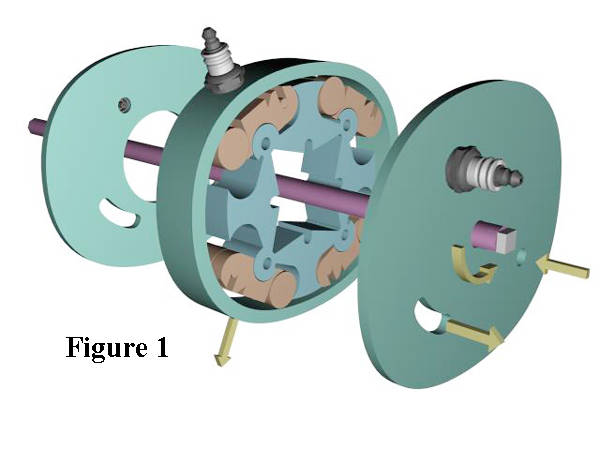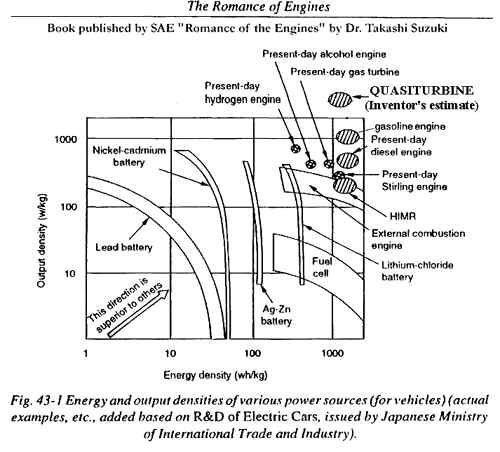
Quasiturbine - Discover Magazine Semi-Finalist !
(Candidature non retenu comme finaliste - Not
selected as finalist)
**********************************************************************
Subject: Quasiturbine - Discover Magazine 2000 Awards
Semi-Finalist !
Date: Wed, 2 Feb 2000 16:57:19 -0500
From: discover@disney.com
To: quasiturbine@promci.qc.ca
Dear Dr. Saint-Hilaire:
The editors at Discover have reviewed your entry: Nomination ID: 17
'Quasiturbine Continuous Combustion Rotary Engine' http://quasiturbine.promci.qc.ca
and would like to learn more about this innovation.
At this stage, your entry is being considered as a semifinalist
in the Discover Magazine Awards for Technological Innovation.
We will be in touch with you regarding your status in the coming weeks.
Thank you and good luck!
Darlene Cavalier
http://www.discover.com
**********************************************************************
DISCOVER Magazine Awards for Technological Innovationhttp://www.discover.com/awards/index.html
**********************************************************************
Quasiturbine Application (Nomination ID #17)
Discover Magazine Awards for Technological Innovation
Sponsored by the Christopher Columbus Fellowship Foundation
Filed December 13, 1999 - Winners selection on June 24, 2000
1 What is the title of the invention ?Quasiturbine Zero Vivration Continuous Combustion Rotary Engine, Compressor and Pump.

2 Describe the innovation ?
The Quasiturbine make use of a new concept of rotary engine which improves the conventional internal combustion engines in 2 ways with numerous advantageous : in reducing the engine dead time, and in making better time management of the strokes. Engine concept calculation are very complex, but final results are easy to understand and apply.
3 How does it works ?
While most rotary engines use the principle of volume variation between a curve and a moving cord, this new rotary engine concept makes use of a "four degrees of freedom X, Y,
q, ø" rotor, confined into a confinement housing internal contour, having no need for a central shaft. In reference to gas turbine, the Quasiturbine succeed at unifying the two turbines into one entity (blades of which work alternatively as a compression turbine and a power turbine). This new turbine is hydrostatic, not hydrodynamic, and has an idle of only 150 RPM, with a wide efficient power range. It uses only 4 identical pivoting blades and 4 carriers in a housing with a special internal confinement contour. As the turbine, it is continuous combustion, requiring a sparkplug only to start.4 What problem does it solved ?
It does solved most of internal combustion engine problems, by dropping the use of the crankshaft and using an asymmetric pressure cycle, which allows less time to compression and exhaust stroke, and allows more time and volume to the intake and combustion stroke, as all engine should. Substantial improvement occur in: Internal engine accessories energy consumption, vibration, acceleration, NOx reduction, weight and volume reduction, photo-detonation mode and pure hydrogen fuel combustion capability.

5 Why is it important ?
-It does provide a more thermodynamically fuel efficient engine cycle.
-It does provide a low noise, perfectly balanced, zero vibration, low rpm (150-3000), fast
acceleration engine.
-It does provide a zero dead time engine, allowing for 3 to 5 times improvement in power
density and volume.
-It does provide an engine almost universal in relation to energy sources, which can run
efficiently on pneumatic, steam, hydraulic, and liquid and gas fuel in internal combustion
mode.
-Due to its short pressure peak and cold intake area characteristics, it does provide an
engine suitable for photo-detonation mode (perfect combustion) and pure hydrogen fuel
combustion.
-For the same reason, it does provide an engine producing much less NOx.
-It does provide an engine potentially lubrication free (less pollution).
-It does provide an engine easy to built.
-Same concept can be used as pump or compressor.
6 What is the consumer interest ?
National interest : Energy / Environment / Economic :
-Fuel saving : Efficiency, no gearbox, weight and volume reduction.
-Environment/comfort : Noise, vibration, NOx, fast acceleration.
-Economic : Competitive to built.
-Public reaction : Since public disclosure in September 1999, it has been selected as the
engine of the 21st century by the European Automotive Design
Magazine, the Eureka Innovative Engineering Magazine,
the L'Éco Du Transport Dec. 99 Magazine, L'Éco Du Transport April 00 Magazine and by the Diesel Progress USA Magazine in January 2000. The Canadian
Broadcasting Corporation is making a TV story
report, which should be broadcast in 70 contries in April and May 2000.
7 Give a brief comparison : Piston - Wankel - Quasiturbine ?
From the numerous criteria permitting to compare engines between themselfs, one can not
ignore the integrity of the expansion volume, and the propulsive factor ratio. One must
recall that all volumes are generated from the movement of a surface (the cube is
generated by the movement of a square, the cylinder by the movement of a circle), and in
order to get an optimum geometric efficiency, the expansion volume must be generated only
by the effective gas pushing surface. The propulsive factor ratio is the percentage of
time (or of angle) during which the component contribute positively to the engine
propulsion.
The integrity of the expansion volume is the implacable characteristic of the piston
engine, which has allow it to resist for more than a century to all other engine concept.
In fact, lets consider a cylinder with multiple internal cavities perforation (let say for
example that the total volumes of all the cavities is twice the volume of the considered
cylinder) and in which a piston moves. Since the pushing stroke goes from the minimal
volume (top center) to the maximum volume (bottom center), the maximum volume would not be
the one generated by the movement of the circular moving piston, i.e.1 cylinder, but 3
time more due to lateral cavities, which would also be responsible for a substantial
pressure lost. Such an engine would still run fine, however its energy efficiency would be
poor. The conventional piston has a low propulsive factor ratio (120 / 720 degrees = 17%),
but a final expansion volume strictly equal to the one generated by the movement of its
piston surface, which guaranty a good geometric efficiency.
What about the Wankel ? Since its rotor has only 3 times 30 degrees of dead time per
revolution, the propulsive factor ratio reaches (270 / 360 degrees) 75% for the Wankel,
which is a substantial improvement. However, we have demonstrated mathematically, that the
final expansion volume is 3 time larger than the volume generated by the movement of the
variable tangential pushing surface (this demonstration make use of integral calculus).
Consequently, the Wankel can not have an energy efficiency as good as the piston engine
(it does in fact compare to the cylinder with cavities presented earlier).
And the Quasiturbine ?
Useful backup documents : (Available at : http://quasiturbine.promci.qc.ca )
- Why is the Quasiturbine (Qurbine) so exceptional ?
- Why is the Quasiturbine superior to the piston engines ?
- Why is the Quasiturbine not a Wankel's type engine ?
- Technical characteristics : Torque, power and consumption.
- Basic drawings and photos of the prototype.
- Quasiturbine value for the Consumers .
- The popularized article at ACFAS 2000 (in French).
- Quasiturbine News and Press Review .
- Patent Applications.
**********************************************************************| Retour au menu principale / Return to main menu |
Quasiturbine Agence Inc., Promotional
Agent for the Quasiturbine Continuous Combustion Rotary Engine or Compressor
Casier 2804, 3535 Ave Papineau, Montréal Québec H2K 4J9 CANADA (514) 527-8484 Fax (514)
527-9530
http://quasiturbine.promci.qc.ca
quasiturbine@promci.qc.ca